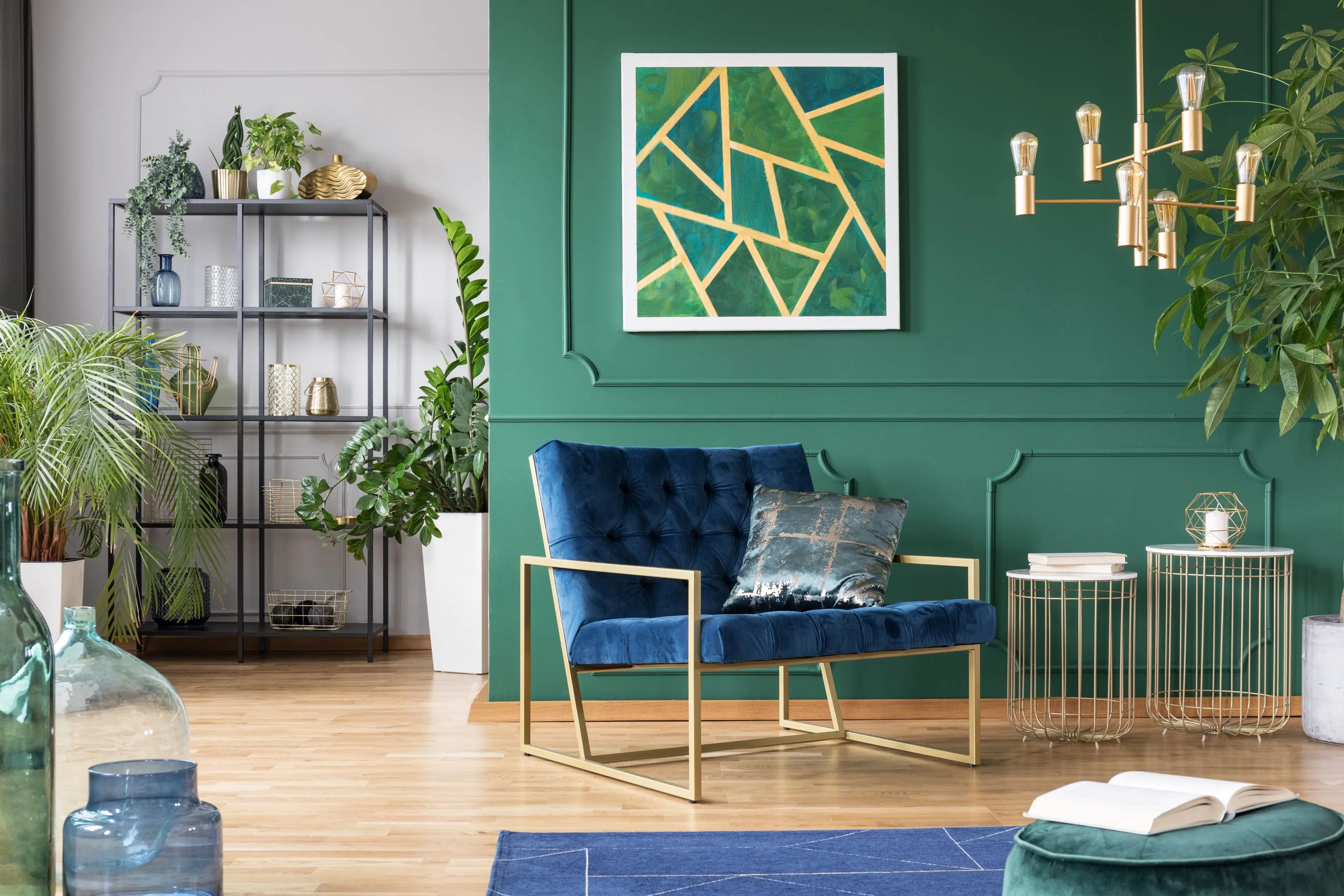Types Of Wall Paints For Interior And Exterior Walls

 Aug , 2023
Aug , 2023- Interior
- 4 Min Read
With so many types of wall paints available, it can be overwhelming when choosing the right paint for a specific purpose. But fret not, this guide is sure to help you.
Introduction To Wall Paints
Whether you’re looking for a subtle, one-color effect or something bold and vibrant, wall paints will give you the flexibility you need. Wall paints can be used in many different ways, such as:
- Adding wall colour to an accent wall
- Painting an entire room
- Painting over wallpaper or other existing surfaces
Factors To Consider When Selecting Wall Paints
When you’re looking for new types of wall paint colours to go on your walls, there are a lot of factors that can help you make the right decision. Berger makes it easy to choose:
Surface Material And Condition
If you’re painting an interior surface, choose a wall colour paint that can withstand moisture and other elements. On an exterior surface, it’s best to go for wall paint types that resist elements like UV rays and weathering.
Indoor Or Outdoor Application
Weather-resistant paints that withstand exposure to sun, rain, etc are perfect for outdoor application whereas low-odour application and easy-drying wall paints types are best for indoors.
Desired Finish And Aesthetics
Rustic-style homes are elevated with a flat finish wall colour whereas modern homes with lots of angles and curves look good with a semi-gloss or high gloss finish wall colour to give it a contemporary twist.
Environmental And Health Considerations
If there are any VOCs in the wall paint colour, these can cause eye irritation, respiratory issues, and other health problems. Always choose eco-friendly wall colours and types of paint.
Budget And Longevity
Some types of paints last longer, so if you want a long-lasting finish, you should select a budget-friendly and higher-quality product.
Interior Wall Paints
Here are some of the best Interior Wall Paints from Berger:
Water-Based (Latex) Paints
They are easy to apply and dry quickly, which makes them great for DIY projects. They also have a lower odor than oil-based paints.
Oil-Based Paints
Oil-based paints dry slower than water-based paints, but they offer better coverage and durability.
Matte Paints
Matte paints are perfect for kitchens and bathrooms as they provide an easy-to-clean smooth surface ensuring no fingerprints or smudges are left behind!
Eggshell Paints
Such types of paint have a low sheen, which means they’re more matte than glossy which gives a textured surface.
Satin Paints
Satin paints have a medium gloss finish and are great for bedrooms or bathrooms as these types of paint are resistant to moisture.
Semi-Gloss Paints
Semi-gloss paints have a sheen between satin and gloss and look great in all rooms.
Gloss Paints
Gloss paints are also great for areas where there is high traffic, such as kitchens and bathrooms. Easy to clean hence these types of paints are ideal for busy households.
Exterior Wall Paints
Berger’s Exterior wall paint colours can protect your home’s exterior walls from the elements, which can allow them to last longer.
Acrylic Paints
They’re great for exterior walls as they’re water-based and won’t crack or peel. They can be used on concrete, wood, metal, and other surfaces.
Elastomeric Paints
Elastomeric paints have a strong elasticity that makes them perfect for exterior use, making them extremely resistant to cracking or peeling from temperature changes.
Textured Paints
These wall paint colours from Berger are great for modern interiors and can be used on their own or as an accent piece in an existing design.
Stucco Paints
Berger’s stucco wall paint colour have a rough texture that makes them perfect for covering up uneven surfaces like old brick or concrete.
Masonry Paints
These wall paint colours typically have high tinting strength, meaning they cover well and prevent fading due to UV rays.
Weatherproof Paints
Weatherproof paints protect exterior paint surfaces from water, UV rays, dirt, etc.
Wall Paint Color Trends
Popular Interior Wall Color Trends
Some great types of wall paint colours that are sure to elevate your interior walls include gray, which is a cool and calm choice. Turquoise is all about making a bold statement. Taupe is sure to add subtle depth and dimension to the space.
Popular Exterior Wall Color Trends
Some great options from Berger include blue-gray, warm tones, and creamy white to add life to your exterior paint walls.
Conclusion
There are many types of wall paints in interior paint and exterior paint walls. All types of wall paint colours including interior paint and exterior paint have pros and cons, as well as a unique application process. Get assistance from Berger to keep your house beautiful, inside out.
check for any query you have about the blog
Frequently Asked Questions
Interior paints will often have a low odor or no odor. Exterior paints have more resins to protect against weathering.
- Prepare walls by removing existing coatings for interior wall paints and exterior wall paints.
- Clean the surface to get rid of any residue.
- Apply a primer on interior wall paints and exterior wall paints by following the instructions on the product’s label.
- Finally, start painting with your chosen colours on interior wall paints and exterior wall paints.
Or you can go for Berger Express Painting Services to let the experts make it easier for you.
Berger Silk Breathe Easy is a low VOC eco-friendly solution including bio-resistant ingredients to prevent fungus.
Berger Glow-in-the-dark paints are available in wonderful themes.
- Prepare the surface
- Use high-quality wall paints
- Don’t forget about priming




